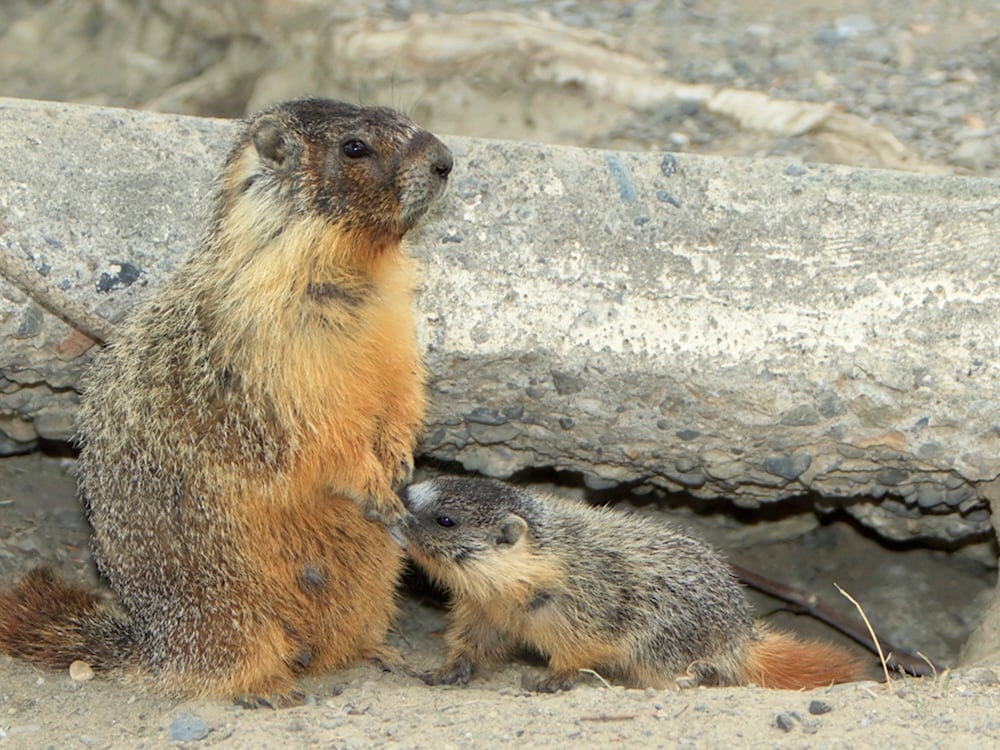Top Stories
Merritt Takes Action to Relocate Cemetery Marmots After Damage

The city of Merritt, located in British Columbia’s Nicola Valley, is taking steps to address a growing issue with marmots inhabiting its cemetery. Once regarded as a charming mascot for the community, these rodents have begun to cause significant damage by digging around graves and compromising the integrity of memorial sites. In response to complaints from residents and city officials, Merritt has decided to allocate $10,000 to trap and relocate some of the animals.
The problem escalated after previous attempts to deter the marmots, such as spraying coyote urine around the cemetery, proved ineffective. Mayor Mike Goetz reported seeing large numbers of marmots during a recent visit to the cemetery, noting that they were present around the columbarium, a structure containing compartments for urns. “There must have been 30 of them that just bailed as soon as I got there,” he stated during a council meeting.
While the marmots have become a source of frustration, they were once celebrated by the community. In 2012, local residents even created a humorous TV channel called “The Marmot Channel” featuring shows like “This Hour Has 22 Marmots.” Last year, a marmot was chosen as the community’s official mascot. However, as their population has thrived in the cemetery’s environment, the situation has shifted dramatically.
Marmots prefer open areas where they can easily spot predators, making the cemetery an attractive habitat. Unfortunately, their burrowing habits have led to concerns about the structural integrity of grave markers and surrounding plant life. Reports of the marmots damaging graves have sparked rumors, including unverified claims of them dragging bones from caskets. A spokesperson for Merritt stated that while the grave-robbing allegations have not been substantiated, the city is focused on finding solutions.
The city council has opted against culling the marmot population, which is protected under the Species at Risk Act and the B.C. Wildlife Act. Goetz reassured the community, saying, “We’re not going to do anything nasty to the marmots.” Instead, the plan involves hiring a local trapper to safely capture and relocate the animals, although concerns remain about the potential for future marmot populations to return to the area.
As Merritt navigates this wildlife management challenge, it reflects broader issues experienced by various communities in British Columbia. Urban wildlife populations, including deer and geese, have surged in many areas due to expanding human development encroaching on their natural habitats. Cities are grappling with effective strategies to manage these populations without resorting to lethal measures, a topic that has generated much debate.
In Penticton, for instance, a resident faced a harrowing encounter with an aggressive deer that attacked her puppy. This incident sparked discussions among city officials about the growing conflicts between humans and wildlife. Despite a history of culling urban deer, many communities are now exploring non-lethal options, such as forming committees to develop sustainable solutions.
Similarly, communities have adopted contraceptive measures for geese populations, aiming to reduce their numbers while avoiding the ethical concerns surrounding culling. These programs have seen some success, allowing municipalities to manage wildlife populations more humanely.
As for the marmots in Merritt, the city is also exploring additional strategies to deter them, such as disrupting their sightlines and installing fencing. Unfortunately, the chief administrative officer, Cynthia Whyte, indicated that capturing all the marmots is unlikely and that the city may need to repeat the trapping process in subsequent years.
The challenges faced by Merritt highlight the complex relationship between urban development and wildlife. As residents work to balance their appreciation for local wildlife with the need to protect their spaces, the city is left to find solutions that respect both the natural world and the community.
While the idea of marmots and other wildlife adapting to human-created environments can evoke mixed feelings, it underscores the necessity for effective wildlife management strategies in the face of ongoing urban expansion.
-

 Science3 months ago
Science3 months agoToyoake City Proposes Daily Two-Hour Smartphone Use Limit
-

 Health4 months ago
Health4 months agoB.C. Review Reveals Urgent Need for Rare-Disease Drug Reforms
-

 Top Stories4 months ago
Top Stories4 months agoPedestrian Fatally Injured in Esquimalt Collision on August 14
-

 Technology3 months ago
Technology3 months agoDark Adventure Game “Bye Sweet Carole” Set for October Release
-

 World3 months ago
World3 months agoJimmy Lai’s Defense Challenges Charges Under National Security Law
-

 Lifestyle3 months ago
Lifestyle3 months agoVictoria’s Pop-Up Shop Shines Light on B.C.’s Wolf Cull
-

 Technology3 months ago
Technology3 months agoKonami Revives Iconic Metal Gear Solid Delta Ahead of Release
-

 Technology3 months ago
Technology3 months agoApple Expands Self-Service Repair Program to Canada
-

 Technology3 months ago
Technology3 months agoSnapmaker U1 Color 3D Printer Redefines Speed and Sustainability
-

 Technology3 months ago
Technology3 months agoAION Folding Knife: Redefining EDC Design with Premium Materials
-

 Technology3 months ago
Technology3 months agoSolve Today’s Wordle Challenge: Hints and Answer for August 19
-

 Business3 months ago
Business3 months agoGordon Murray Automotive Unveils S1 LM and Le Mans GTR at Monterey









